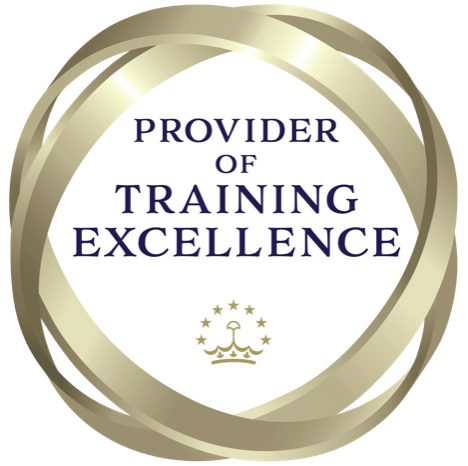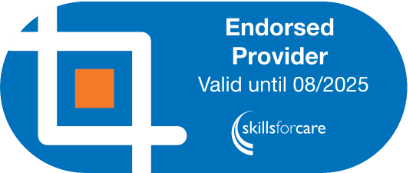


This course is for those who need to requalify for their Scottish First Aid at Work SCQF Level 6 qualification. The course is for those who already have a qualifying expiring FAW and need to complete the 2-day requalification course.
This qualification will provide all the required first aid skills necessary to manage a patient that is not breathing normally, is unconscious, bleeding or is ill or injured prior to the arrival of the emergency services.
The course is designed to provide the First Aider with the skills necessary to give effective basic life support, diagnose and treat minor and manage major injuries or illness keeping the patient alive until the emergency services arrive. This qualification will enable the holder of this qualification to deal competently and confidently as a first-aid trained member of staff in the workplace.
This qualification has been accredited by SQA Accreditation and may be eligible for public funding. Each unit within the qualification and the qualification itself will have a unique reference number which is listed in this specification. The qualification title and unit reference numbers will appear on the learners’ final certification document. Learners need to be made aware of this when they are recruited by the centre and registered with FutureQuals.
The content of this and all our courses has been independently certified as conforming to universally accepted Continuous Professional Development (CPD) guidelines and come with a Certified CPD Statement as well as a ProTrainings Certificate and for online courses an Evidence Based Learning statement.
This course gives learners the opportunity to gain a formally recognised regulated qualification. If you require funding, a regulated qualification is often required. Phone us and we can advise if needed. If you choose our course leading to a regulated qualification, there are additional assessment criteria to be undertaken with an instructor and a small extra certification charge.
| Regulated Qualification Details | |
|---|---|
| Course Title: | First Aid at Work at SCQF Level 6 |
| QAN: | R538 04 |
| Level: | 6 |
| Credit Value: | 3 |
| TQT: | 24 |
| The Register of Regulated Qualifications | |
- Anyone requiring first aid in the workplace in Scotland
Learning Outcomes - Emergency First Aid in the Workplace
1 Understand the role and responsibilities of a first aider
- 1.1 Identify the role and responsibilities of a first aider
- 1.2 Identify how to minimise the risk of infection to self and others
- 1.3 Identify the need for consent to provide first aid
2 Be able to assess an incident
- 2.1 Conduct a scene survey
- 2.2 Conduct a primary survey of a casualty
- 2.3 Summon appropriate assistance when necessary
3 Be able to provide first aid to an unresponsive casualty
- 3.1 Identify when to administer Cardio Pulmonary Resuscitation (CPR)
- 3.2 Demonstrate CPR using a manikin
- 3.3 Justify when to place a casualty into the recovery position
- 3.4 Demonstrate how to place a casualty into the recovery position
- 3.5 Identify how to administer first aid to a casualty who is experiencing a seizure
4 Be able to provide first aid to a casualty who is choking
- 4.1 Identify when choking is: • mild • severe
- 4.2 Demonstrate how to administer first aid to a casualty who is choking
5 Be able to provide first aid to a casualty with external bleeding
- 5.1 Identify the severity of external bleeding
- 5.2 Demonstrate how to control external bleeding
6 Know how to provide first aid to a casualty who is in shock
- 6.1 Recognise a casualty who is suffering from shock
- 6.2 Identify how to administer first aid to a casualty who is suffering from shock
7 Know how to provide first aid to a casualty with minor injuries
- 7.1 Identify how to administer first aid to a casualty with: • small cuts • grazes • bruises • small splinters
- 7.2 Identify how to administer first aid to a casualty with minor burns and scalds.
Learning Outcomes - Recognition and Management of Illness and Injury in the Workplace
1 Be able to conduct a secondary survey
- 1.1 Identify the information to be collected when gathering a casualty history
- 1.2 Demonstrate how to conduct a head to toe survey
2 Be able to provide first aid to a casualty with suspected injuries to bones, muscles and joints
- 2.1 Recognise suspected: • Fractures and dislocations • Sprains and strains
- 2.2 Identify how to administer first aid for: • Fractures and dislocations • Sprains and strains
- 2.3 Demonstrate how to apply: • a support sling • an elevated sling
3 Be able to provide first aid to a casualty with suspected head and spinal injuries
- 3.1 Recognise a suspected: • Head injury • Spinal injury
- 3.2 Identify how to administer first aid for a suspected head Injury.
- 3.3 Demonstrate how to administer first aid for a suspected spinal injury.
4 Know how to provide first aid to a casualty with suspected chest injuries
- 4.1 Recognise a suspected: • Flail chest • Penetrating chest injury
- 4.2 Identify how to administer first aid for a: • Flail chest • Penetrating chest injury
5 Know how to provide first aid to a casualty with burns and scalds
- 5.1 Identify the factors that affect the severity of burns and scalds
- 5.2 Identify how to administer first aid for burns involving: • Dry heat • Wet heat • Electricity • Chemicals
6 Know how to provide first aid to a casualty with an eye injury
- 6.1 Identify how to administer first aid for eye injuries involving: • Dust • Chemicals • Embedded objects
7 Know how to provide first aid to a casualty with sudden poisoning
- 7.1 Identify the routes that poisons can take to enter the body
- 7.2 Identify how to administer first aid to a casualty affected by sudden poisoning
- 7.3 Identify sources of information for treating those affected by sudden poisoning
8 Know how to provide first aid to a casualty with anaphylaxis
- 8.1 Identify common triggers for anaphylaxis
- 8.2 Recognise suspected anaphylaxis
- 8.3Identify how to administer first aid for a casualty suffering from anaphylaxis
9 Know how to provide first aid to a casualty with suspected major illness
- 9.1 Recognise suspected: • Heart Attack • Stroke • Epileptic seizure • Asthma attack • Diabetic emergency
- 9.2 Identify how to administer first aid to a casualty suffering from: • Heart Attack • Stroke • Epileptic seizure • Asthma attack • Diabetic emergency
- Student Manual (V8.7) - Workplace First Aid
- Adult CPR Flowchart
- Adult CPR Flowchart handout/poster
- Asthma UK weblink
- Cae Inspectorate Scotland website link
- Care Information Scotland website link
- Catastrophic bleeding and trauma First Aid Guidance From ProTrainings.
- Celox leaflet on haeostatic dressings
- Child CPR Flowchart handout/poster
- Clean hand techniques leaflet
- EpiPen Guide
- EpiPen patient information sheet
- Find out what other courses are available as video online, blended and classroom courses nationally - our course finder
- Free student first aid program leaflet
- Government Advice - Best Practice Hand Rub
- Government Advice - Best Practice Hand Wash
- HSE First Aid at Work Regulations
- Home Emergency Contact Sheet
- How to register to call EMS by text
- Infant CPR Flowchart handout/poster
- Jext Product Data Sheets
- Jext patient Information Sheet
- Link to the HSE website
- NHS Choices Web link
- Oxygen User Instructions - Gas rentals are available from ProTrainings, contact us for more information
- Oxygen and Analgesic gases from ProTrainings
- ProTrainings - Using an AED Leaflet
- ProTrainings Defibrillator eGuide
- Proper CPR Hand Placement for Adults Children Infants leaflet
- Sign up for free Student First Aid - use code SCH-376-61-571
- Student Manual (V7.0) - First Aid - Arabic
- Student Manual (V7.0) - First Aid - Spanish
- Student Manual (V8.3) - Pierwsza Pomoc w Pracy Ksiazka studenta - Polish
- Student Manual (V8.6) - Anatomy and Physiology Human Body
- Student Manual (V8.6) - First Aid - Welsh
- Student Manual V8.6 - First Aid - Dutch
- Student Manual V8.6 - First Aid - Portuguese
- Student manual V8.6 - First Aid - French
- Student manual V8.6 - First Aid - Ukrainian
- Student manual V8.6 - First Aid Manual Italian
- Visit the First Aid Show free for first aid and medical videos
- Web link to the Joint Epilepsy Council website - JEC
- Workplace Accident Book
- Workplace Emergency Contact Sheet
- Woundclot - haemostatic gauze for all types of bleeding
- Woundclot leaflet with price list - 2025
What is CPD and why is having Certified CPD important?
CPD stands for Continuous Professional Development and is required in many business sectors. Even if you do not require a set CPD credit level, having Certifed CPD ensures the quality of training. ProTrainings are the highest gold standard of CPD ensuring that all courses are externally verified and mapped to the highest levels.
What is "SCORM ready" and will courses run on a LMS?
SCORM Ready means that online courses can run on any compatible Learning Management System (LMS). SCORM courses run seamlessly on your existing LMS system without a separate login so staff only login using the existing company system. ProTrainings online courses have an advanced SCORM ready system to give more features than any other company.
Do I receive a certificate after completing your online training?
Yes, when you complete the online course you will be able to download and print a compliant completion certificate, evidenced-based learning statement to confirm course content and a certified CPD statement. There is no extra charge for the certificate. You can also buy a printed certificate to be posted to you for a small extra fee.
What training courses do you offer and how are they delivered?
We offer a full range of training courses across all business sectors as video online, blended and nationwide at your business or our local training centres. With over 350 courses you can learn at a time and place that meets your busy schedules and save money on travel and costs away from the office.
Are your courses Endorsed?
Yes, all ProTrainings courses are Endorsed by TQUK in addition to other approvals and endorsements to give you a quality compliant qualification for your courses whatever delivery method you take.
Why do I need accredited training courses?
Whether you are employed, running a business or taking training for other reasons, you need to ensure the course is trustworthy and will pass due diligence checks. Taking courses that are accredited gives you peace of mind of the quality, compliance and that your certificate will be accepted. Choosing ISO companies to ensure they are externally verified.
Are courses all online or can I take a blended or class course locally?
Most of our courses are available as online or classroom-based at a training centre locally. We can also send an instructor to your business to save travel and tailor the course to your business. To save time and money you can take most courses in a blended format with online and class training.

